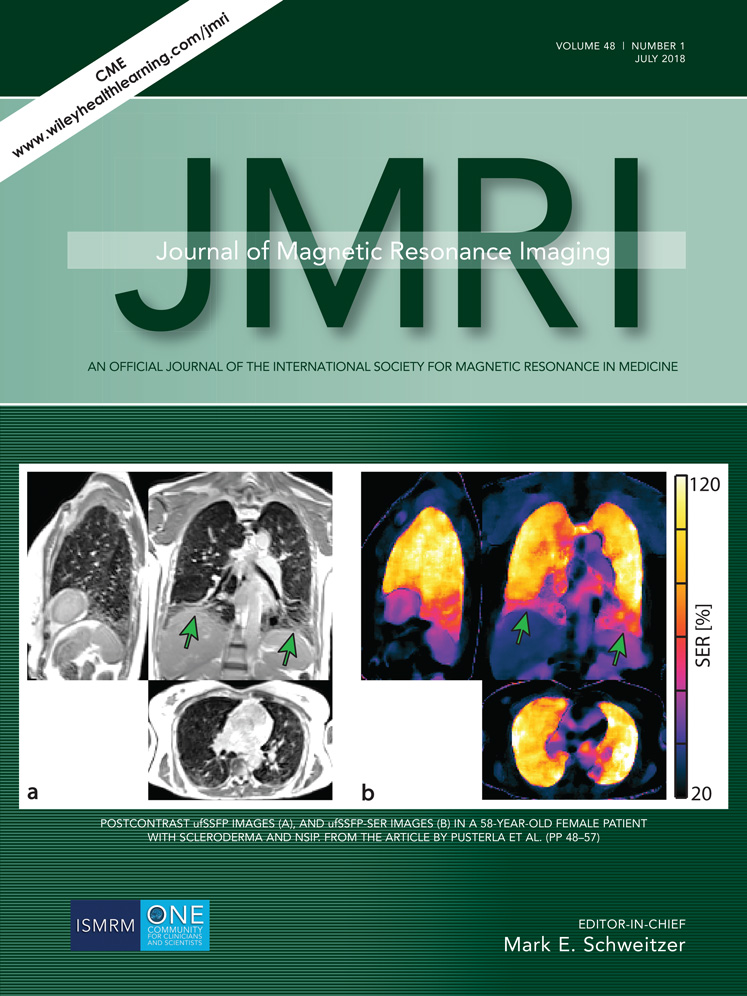Noncontrast-enhanced time-resolved 4D dynamic intracranial MR angiography at 7T: A feasibility study
Abstract
Background
Arterial spin labeling (ASL) based-noncontrast-enhanced 4D MR angiography (NCE 4D MRA) shows potential in characterizing cerebrovascular hemodynamics in cerebrovascular disorders. Ultrahigh-field theoretically benefits ASL signal with increased inherent signal-to-noise ratio (SNR) and prolonged blood T1, which may provide improved delineation of vasculature in 4D MRA.
Purpose
To investigate the feasibility of NCE 4D MRA using 3D Cartesian trajectory and stack-of-stars (SOS) golden angle radial trajectory at 7T.
Study Type
A prospective study.
Subjects
Six normal volunteers and eight patients with arteriovenous malformation (AVM).
Field Strength/Sequence
NCE 4D MRA with Cartesian and radial trajectories were performed at 3T and 7T.
Assessment
Subjective image quality of 4D MRA was evaluated using a 4-point scale by two experienced neuroradiologists. The characterization of AVM components with 4D MRA and DSA was also graded using the Spetzler–Martin grading scale.
Statistical Tests
Cohen's kappa coefficient was calculated to evaluate the agreement between two readers within each 4D MRA technique (Cartesian and Radial). A Wilcoxon signed-rank test was performed to compare the subjective image quality scores of 4D MRA between Cartesian and radial trajectories, and between 7T and 3T, respectively.
Results
Good-to-excellent image quality was achieved in 4D MRA with both Cartesian (3.83 ± 0.41) and radial (3.42 ± 0.49) acquisitions in healthy volunteers at 7T. However, markedly reduced scan time was needed with radial acquisition. 4D MRA at 7T (3.31 ± 0.59) shows better delineation of AVM lesion features, especially the vein drainage, compared with that of 3T (2.83 ± 0.75), although no statistical significance was achieved (P = 0.180).
Data Conclusion
The feasibility of ASL based 4D MRA at 7T with Cartesian and SOS golden angle radial acquisition was demonstrated. The clinical evaluation of 4D MRA in AVMs between 3T and 7T suggested 7T 4D MRA images acquired with radial acquisition demonstrate excellent delineation of AVM features, especially the draining veins.
Level of Evidence: 2
Technical Efficacy Stage 2
J. Magn. Reson. Imaging 2017.




